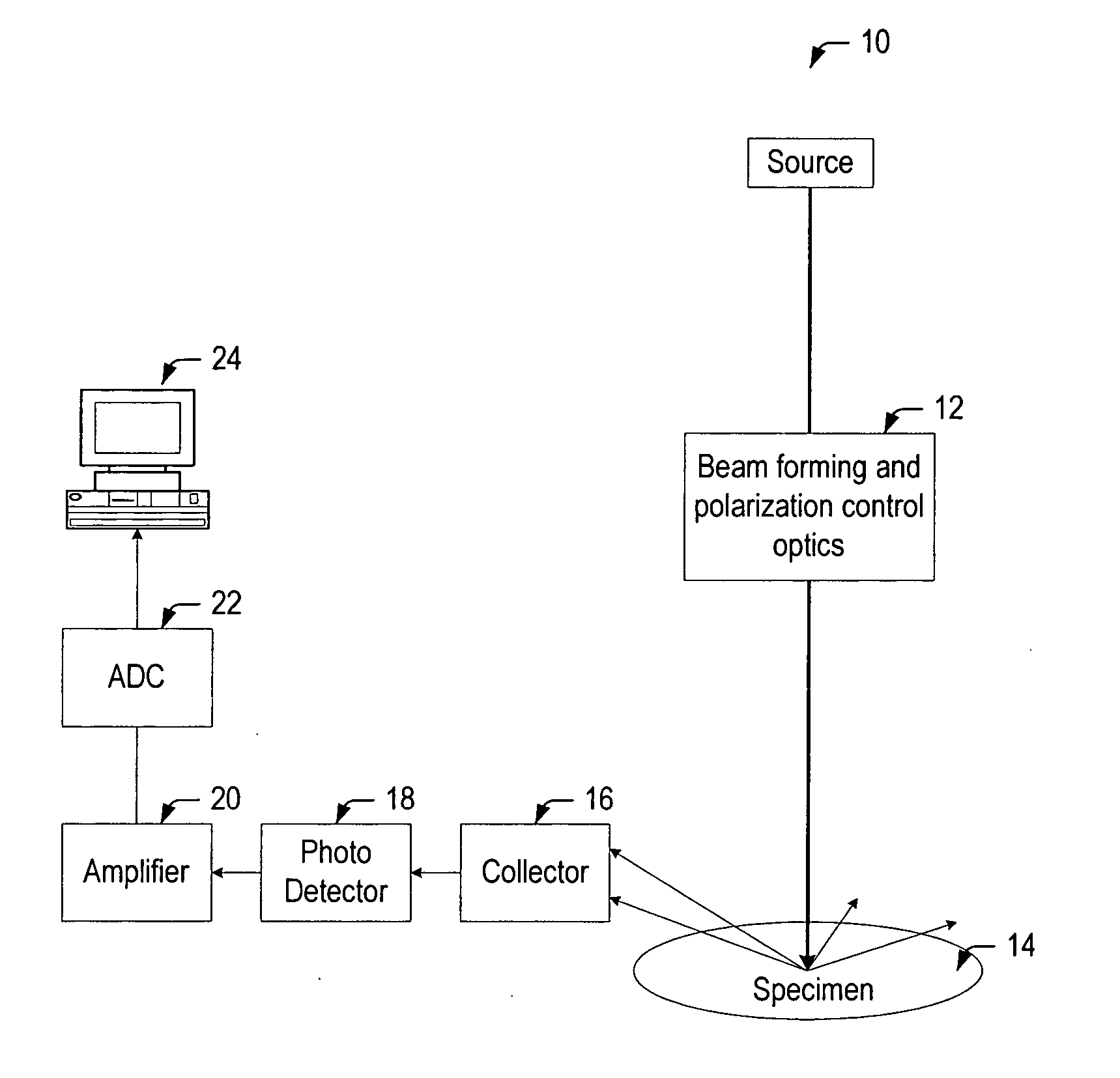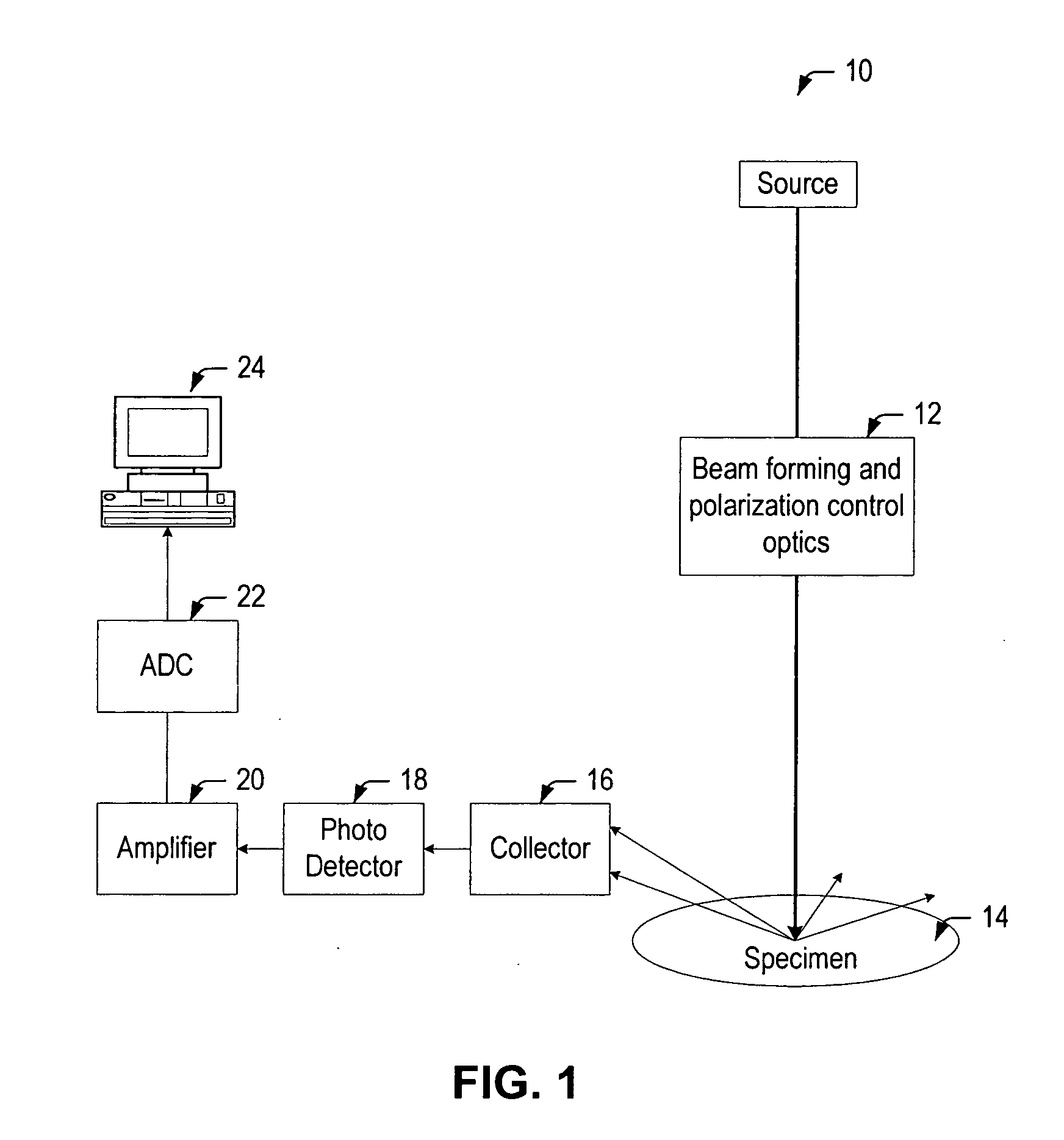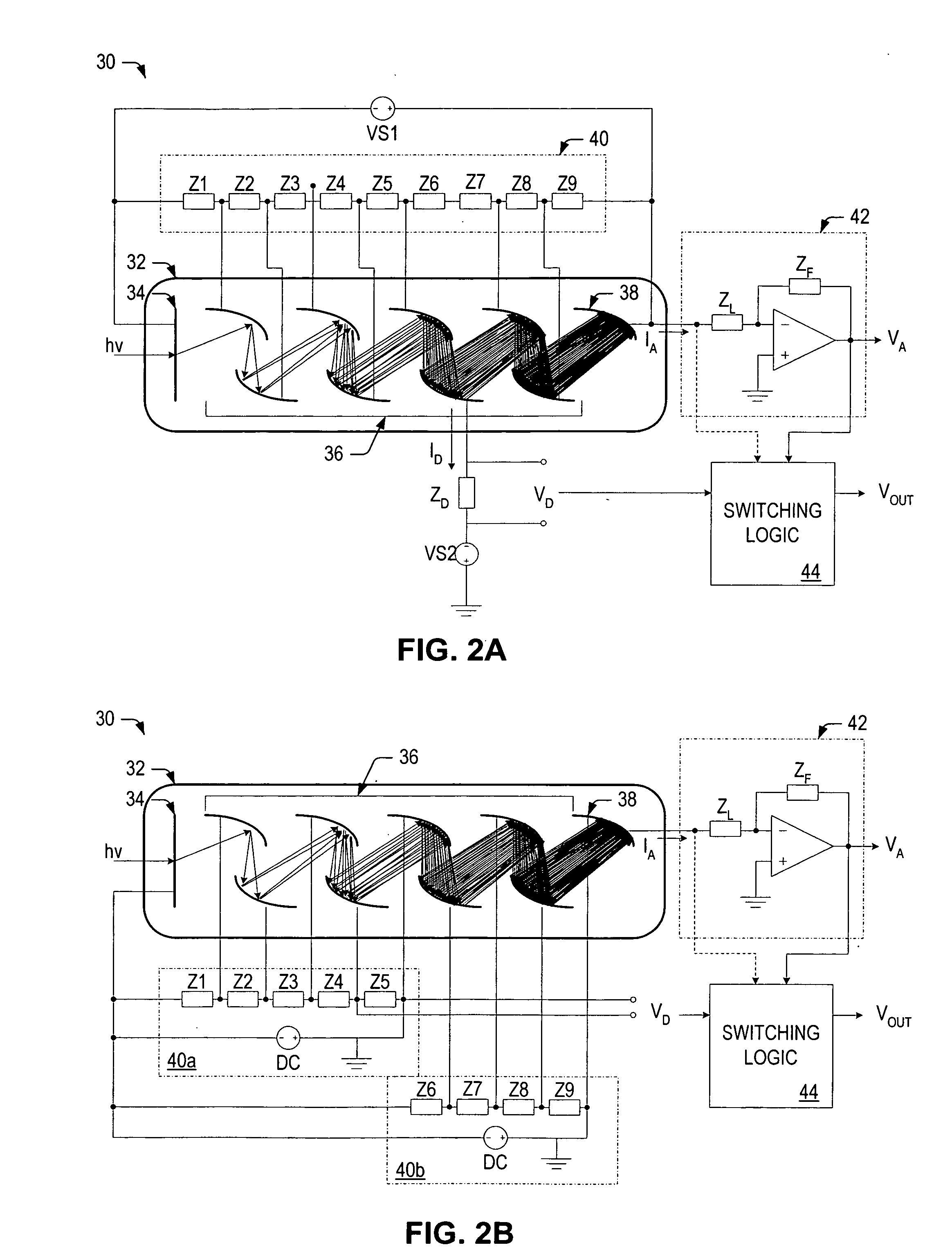Systems, circuits and methods for reducing thermal damage and extending the detection range of an inspection system
a technology of circuits and inspection systems, applied in the field of circuits, systems and methods for inspecting specimens, can solve problems such as single detector saturation, device failure, and inability to inspect different types of wafers, and achieve the effect of maintaining throughput and sensitivity of the inspection system, and reducing thermal damag
- Summary
- Abstract
- Description
- Claims
- Application Information
AI Technical Summary
Benefits of technology
Problems solved by technology
Method used
Image
Examples
Embodiment Construction
[0041] The methods and systems described herein enhance defect detection by addressing various limiting factors of measurement detection range including, but not limited to, detector saturation, amplifier saturation and the fixed bit range of analog-to-digital converters (ADC). Unlike some currently used inspection methods, the inspection system described herein is able to extend the measurement detection range while maintaining signal linearity and stability, and without employing additional detectors, optics and electronic components, all of which undesirably increase space consumption, complexity and cost of the inspection system.
[0042] Various embodiments are described herein for an optical inspection system or tool that may be used for inspecting a specimen. The term “specimen” is used herein to refer to a wafer, a reticle, or any other sample that may be inspected for defects, features, or other information (e.g., an amount of haze or film properties) known in the art.
[0043]...
PUM
| Property | Measurement | Unit |
|---|---|---|
| wavelength range | aaaaa | aaaaa |
| wavelength range | aaaaa | aaaaa |
| wavelength range | aaaaa | aaaaa |
Abstract
Description
Claims
Application Information
 Login to View More
Login to View More - R&D
- Intellectual Property
- Life Sciences
- Materials
- Tech Scout
- Unparalleled Data Quality
- Higher Quality Content
- 60% Fewer Hallucinations
Browse by: Latest US Patents, China's latest patents, Technical Efficacy Thesaurus, Application Domain, Technology Topic, Popular Technical Reports.
© 2025 PatSnap. All rights reserved.Legal|Privacy policy|Modern Slavery Act Transparency Statement|Sitemap|About US| Contact US: help@patsnap.com



